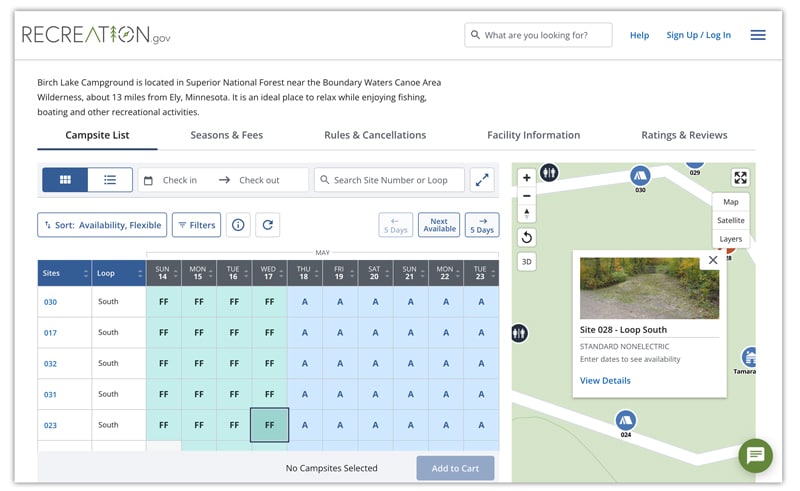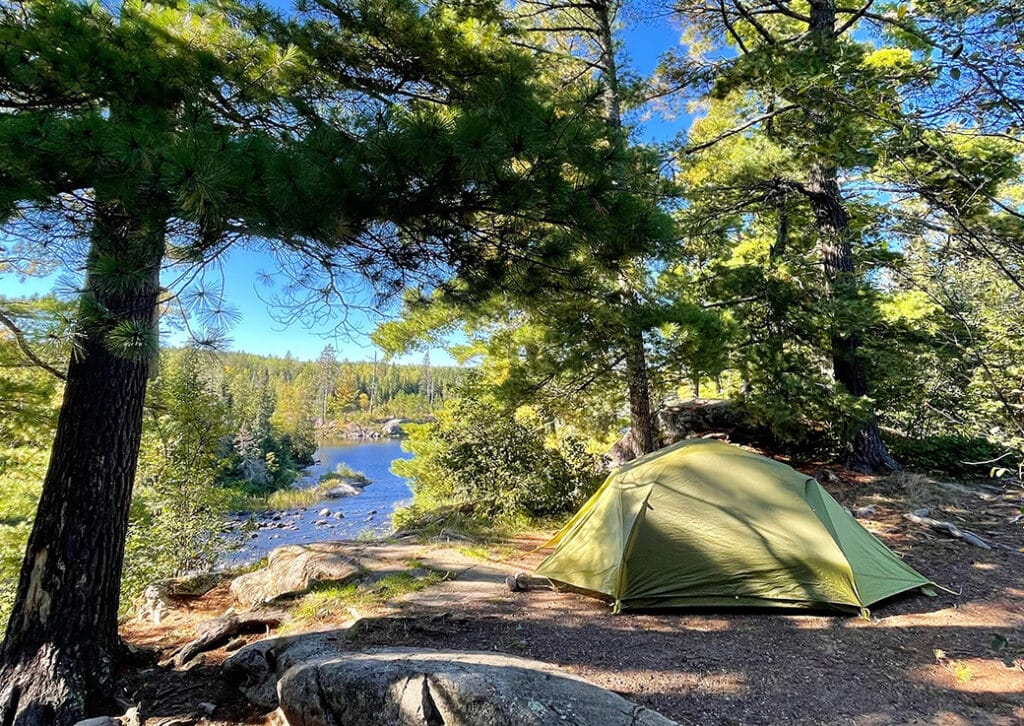
“There are literally no campsites available,” I told my husband, Jer, on that spectacular spring day back in 2010. After an unforgettable camper cabin “camping” trip at Bear Head Lake State Park the previous summer, we were eager to give tent camping a try. The problem, however, was that every single summer weekend at every Minnesota State Park campground was booked solid. Feeling frustrated and defeated, I began searching for other options. When I searched “best camping in Minnesota,” the Superior National Forest appeared again and again near the top of every list. I’d seen signs for the forest along Highway 61, the Gunflint Trail, and on Highway 1 toward Ely, but I was not very familiar with this remarkable wild land. Curious, and desperate to find a place to camp, I dug a bit deeper.
“These campgrounds are gorgeous,” I told Jer as I perused the handful of photos the US Forest Service highlighted on their booking website. I was ecstatic to find an abundance of large, private, and wooded campsites, all near water. Some of them were even right on the water—something I hadn’t seen in Minnesota State Parks. And best of all, there were plenty of available campsites we could reserve for the coming summer.
I had one giant concern though. These campgrounds lacked many of the amenities we were hoping to have as new tent campers. They didn’t have park offices to purchase firewood and rent watercraft and there were no bathhouses. On top of that, most campgrounds lacked cellular service. All these years later, I love camping in the Superior National Forest because of this. But at the time, committing to one of these less-developed campgrounds was stretching the limits of my comfort zone.
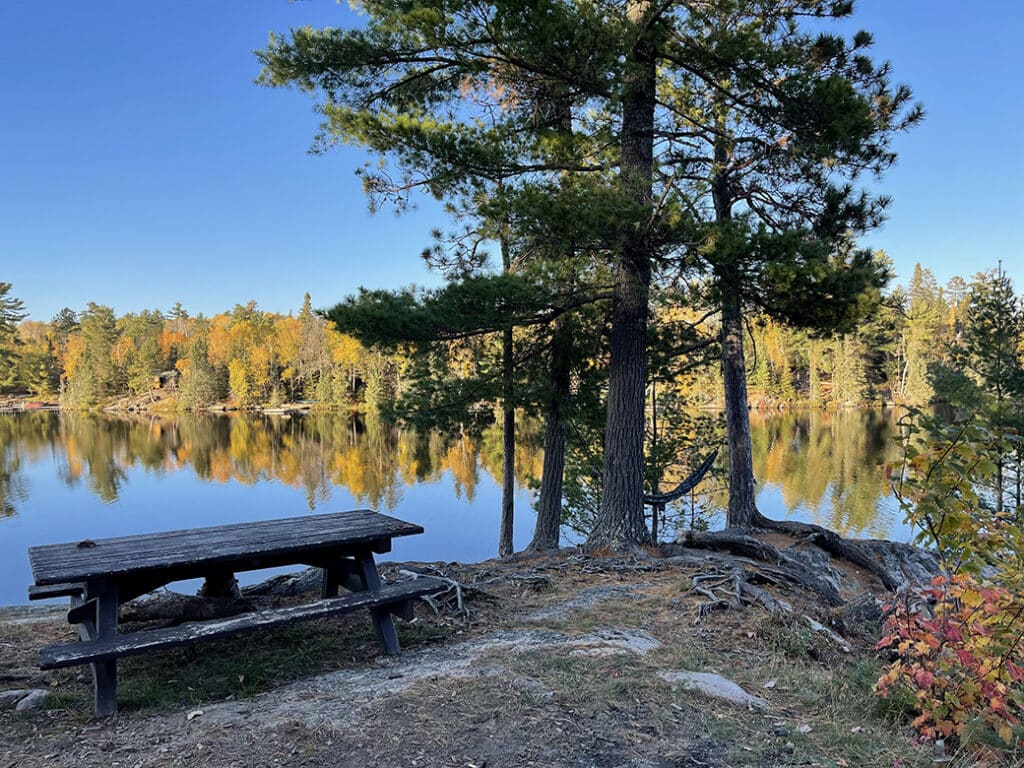
But due to the popularity and long booking window for Minnesota State Parks at the time, we had no choice. I found three wonderful options for that August. I enthusiastically shared my findings with Jer and we narrowed it down to the Flour Lake Campground, just off the Gunflint Trail. I stretched the limits of my comfort zone once again and booked eight nights of camping. And over the next four months, we planned and prepared for our first tent camping vacation.
When the day arrived, we were beyond ready. I was a little worried that we had committed to more than we were capable of. But my excitement for a whole new kind of adventure was stronger than my fear.
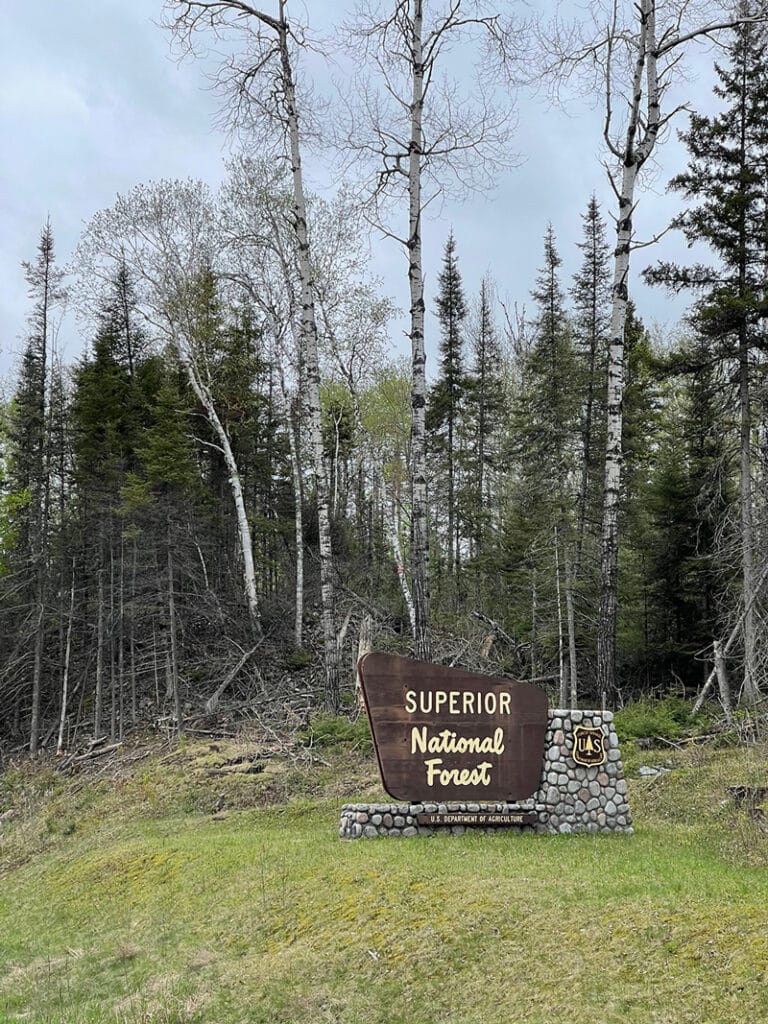
We had our gear dialed in. Our menu was planned and the food was prepped. We even had a long list of places to see and hikes to hike. And off we went.
After our reservation and vacation time had come to an end, we didn’t want to leave. We thoroughly enjoyed that epic week with perfect weather and countless magnificent memories. We knew, without a doubt, that this would not be our last time camping, hiking, canoeing, and fishing in the Superior National Forest. And furthermore, there wasn’t one moment that we regretted not having access to hot showers.
This article is part one of a two-part series of a beginner’s guide to camping in the Superior National Forest. In part one, I’ll help you get a grasp of the vastness and recreational opportunities in this 3-million-acre outdoors person’s paradise. Then make sure you come back for part two where I share the three best campgrounds for beginners like you. Be sure to subscribe to the Wilderness News emails so you don’t miss it.
Why go camping in the Superior National Forest
The Superior National Forest is where I fell in love with this country’s remarkable National Forests. Most forests don’t attract the crowds you’ll find in State and National Parks. They also offer plenty of beautiful first-come first-serve campsites for those of us who don’t always want to plan months and months in advance. National Forests are less developed than the aforementioned State and National Parks, allowing you to slow down and connect to the majestic natural world.
Located in the northeasternmost tip of Minnesota, the 3 million-acre Superior National Forest was established in 1909. It is the largest national forest east of the Mississippi River. Within the boundaries of the forest, you will find the one-million-acre Boundary Waters Canoe Area Wilderness with more than 1,200 miles of canoe routes and 2,000 designated campsites—most of which are only accessible by foot or paddle.
Unlike everything else in this modern world, the forest has changed very little since we first visited it. There have been several wildfires, some new cell towers, and an increase in the popularity of the forest. But you’re still guaranteed to find the quiet, remoteness, and beauty that I fell in love with all of those years ago.
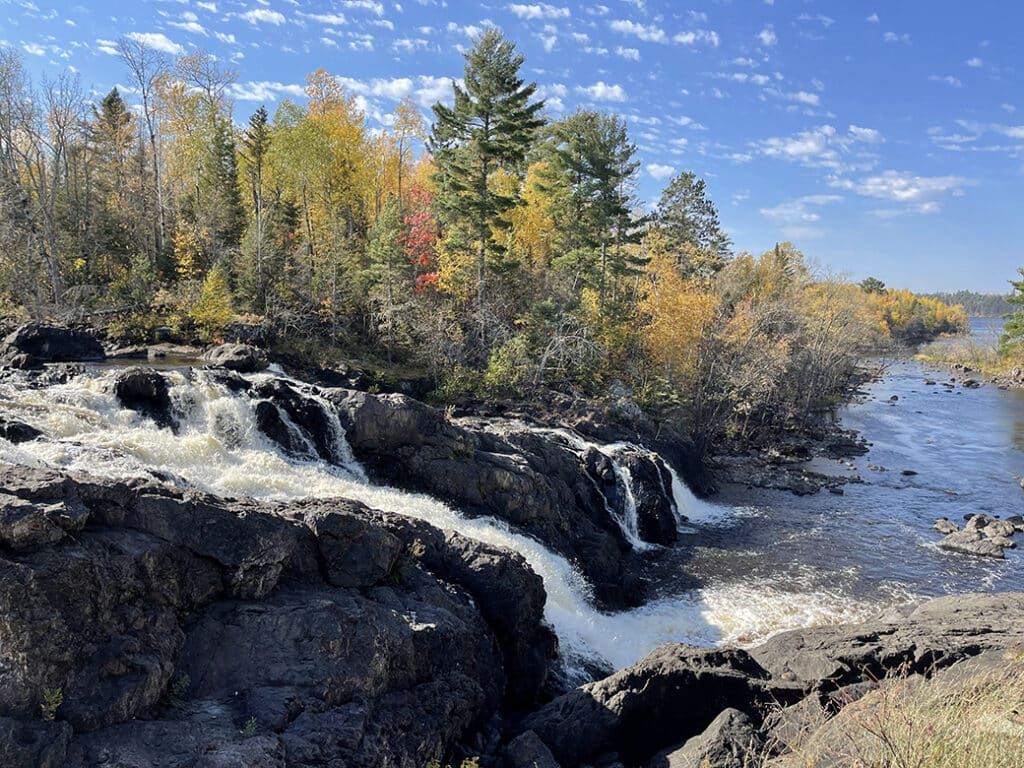
Getting to know the Superior National Forest
From backpacking to canoe camping to dispersed camping to camper cabins to campsites with electric hookups that can accommodate large RVs, there is something for everyone in the Superior National Forest. Since this is a beginner’s guide, I will focus on what beginners will be looking for when planning a camping trip. When I was starting out as a new tent camper, that meant established fee campgrounds with amenities that include toilets, trash disposal, and potable water.
In my experience, three million acres are bigger than it sounds. So it makes sense that this enormous forest is divided into five Ranger Districts. The LaCroix Ranger District is the northwesternmost and smallest district bordering Voyageur’s National Park. Straight east, the Kawishiwi District near Ely, is one of the more popular areas with an abundance of opportunities to get out on the water. South of Kawishiwi, you’ll find the Laurentian District, with busy, but wonderful, recreation areas within close proximity to the city of Duluth. As you travel along Minnesota’s North Shore, you pass through the vast and remote Tofte District, one of my personal favorites. And on the northeastern end of the forest, you’ll find the Gunflint District which encompasses the Gunflint Trail and so much more. You can see a map of the forest and all five districts here.
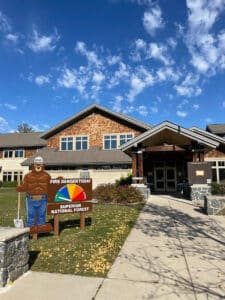
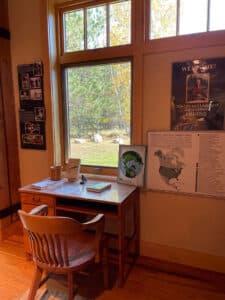
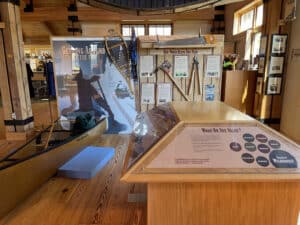
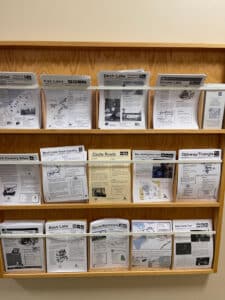
The forest is HUGE and because the Boundary Waters Canoe Area Wilderness lies right in the middle, traveling from point to point isn’t always a simple task. That’s why I recommend starting with one district, and once you’ve explored all that you want to experience, you can move on to the next. Every district is worth visiting and offers beautiful campgrounds and hidden gems. So just do like we did that spring of 2010—pick one and get started. And don’t be afraid to stray from what’s popular and find your own adventure. I guarantee you will not be disappointed.
Superior National Forest Campgrounds
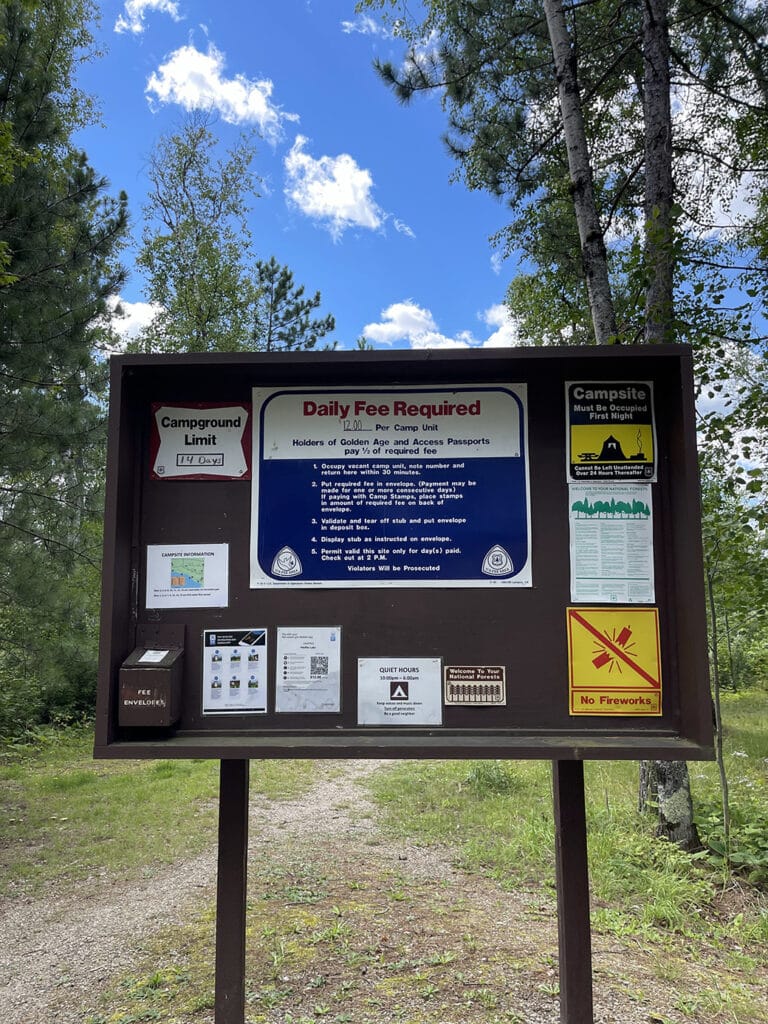
At the time of publication, there are 23 fee campgrounds in the forest. All fee campgrounds have toilets, potable water, and garbage disposal which make them perfect for beginners. One campground, Fall Lake, in the Kawishiwi District near Ely, has bathhouses. This makes the campground very popular and thus, more difficult to secure a reservation. Sites with electricity are available at Fall Lake and South Kawishiwi in the Kawishiwi District, as well as at Whiteface Reservoir in the Laurentian District.
The fees for the 2022 season ranged from $12 per night at campgrounds in the LaCroix District. And top out at $26 per night at the Fall Lake Campground. The smallest campground, Divide Lake, has three quiet campsites within easy walking distance to Divide Lake and a wonderful hiking trail. Fall Lake makes the list again as the largest campground with 64 sites. You can learn more about all of the campgrounds here. Or download the most recent Superior National Forest camping reference guide here. Scroll down to Recreation Opportunity Guides and select Forest-wide Recreation Opportunity Guides and then select Forest-wide Camping.
If you’re just starting and are light on gear, two campgrounds have camper cabins available to reserve. The East Bearskin Lake Campground off of the Gunflint Trail has four darling cabins that sleep five to seven and are available to reserve for $76 per night. The Birch Lake Campground, 30 minutes south of Ely, has 2 cabins that sleep four. Unlike the East Bearskin cabins, these cabins include propane heat and gas lighting. The cabins at Birch Lake can be reserved for $85 per night. As I write this, these cabins are a fairly well-kept secret and much easier to reserve than camper cabins in Minnesota State Parks. So, between you and me, we’ll keep them on the down-low, alright?
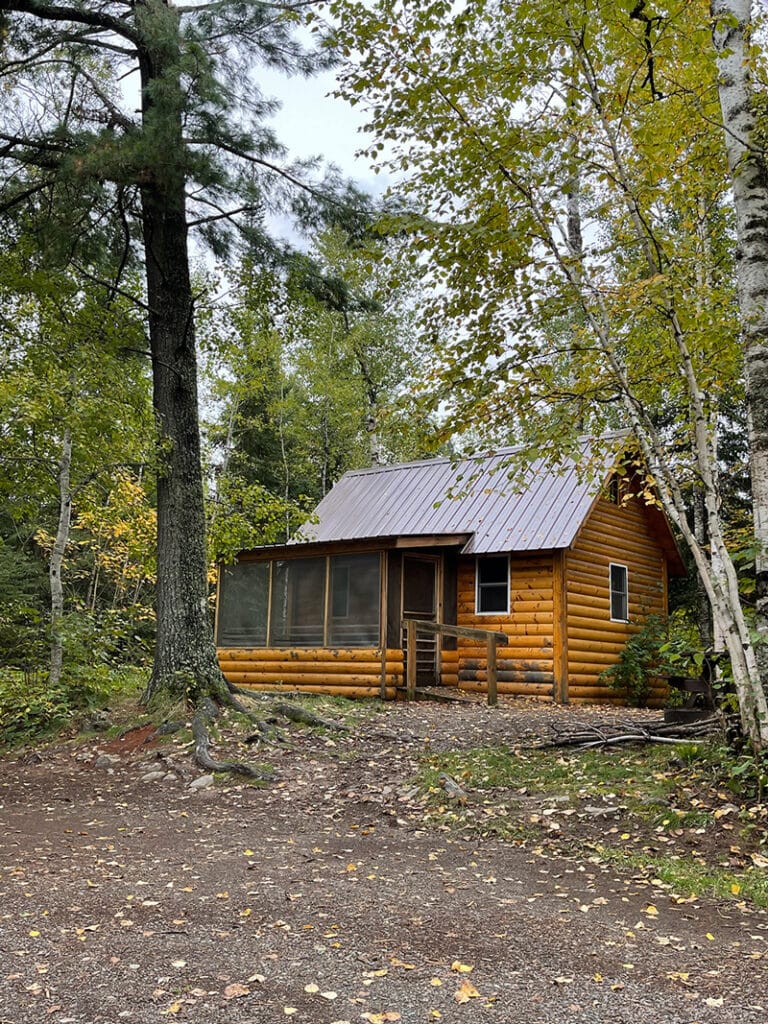

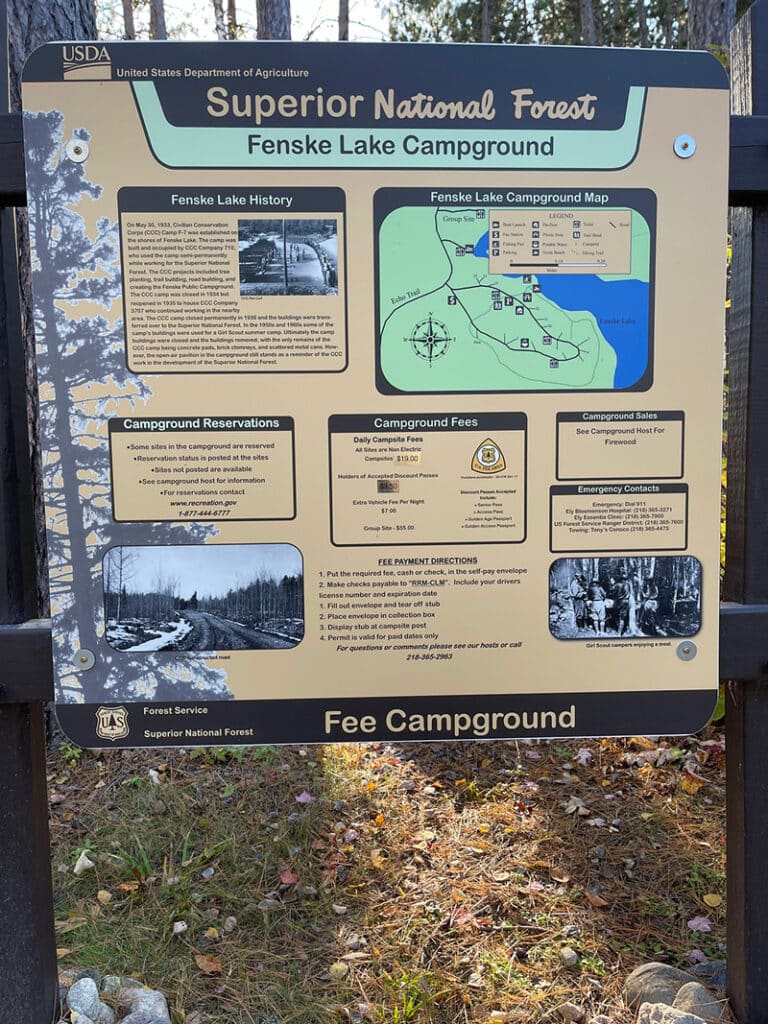

Pro tip: enjoy first-come-first-serve campsites
One of my favorite things about camping in the Superior National is the abundance of first-come-first-serve campsites. Had it not been for these campsites in 2020, I would not have been able to camp that summer since all of the trips we had planned for that summer—the Lake Superior Circle Tour and Isle Royale National Park—were no longer options. Crisis years aside, I use these first-come-first-serve campsites regularly. They’re perfect for last-minute getaways and a great place to spend the night while traveling through the area.
Five campgrounds are exclusively first-come-first-serve. In the Gunflint District, Devil Track Lake, Kimball Lake, and Two Island Lake do not accept reservations. I find that they usually fill up on weekends so it’s probably best to not show up on a Saturday evening during peak camping season. Divide Lake and Temperance River in the Tofte District host another 12 first-come-first-serve only campsites. Aside from these five campgrounds, every fee campground in the forest has some first-come-first-serve campsites available.
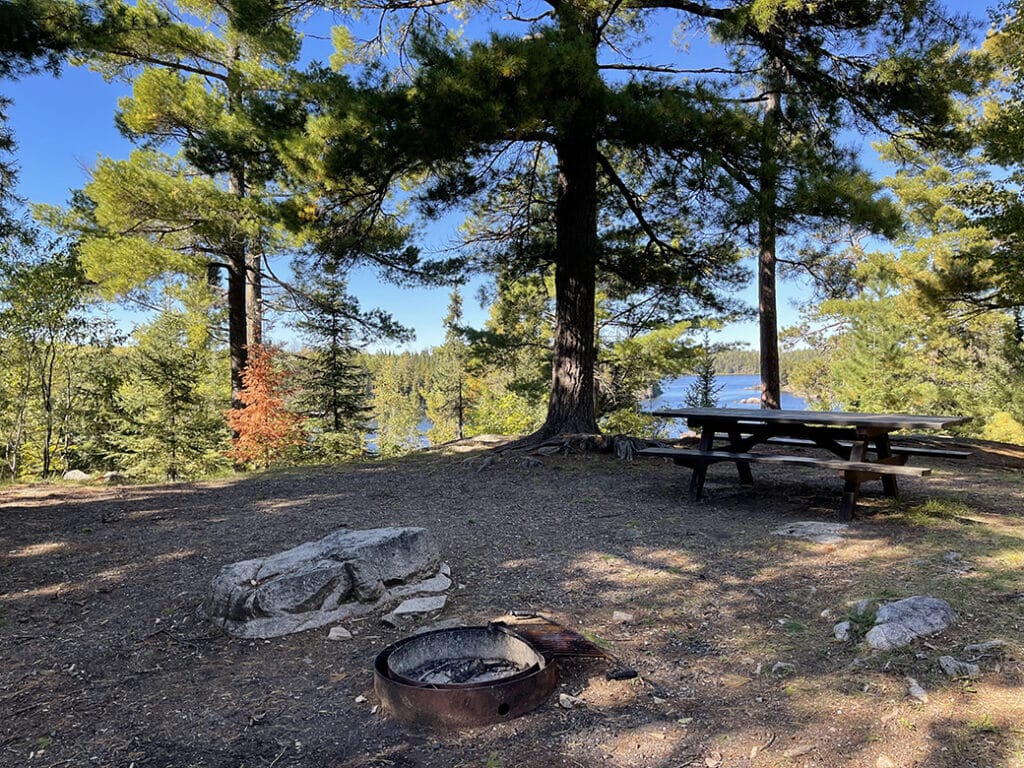
Here’s a can’t-miss pro tip. When you click on a campground here, we’ll use Birch Lake Campground as an example, and click on the Downloadable information and map, you’ll find that it doesn’t always accurately show you which campsites are available for first-come-first-serve. I prefer to know this ahead of time so I always print the maps and circle the non-reservable campsites based on the most current information on the Recreation.gov booking site. If you go out a week or more, all of the first-come-first-serve sites will be shaded green with an FF. I learned this lesson the hard way after driving more than four hours early one Thursday morning to a campground that had fewer first-come-first-serve campsites than were shown on the downloadable PDF. I then had to turn around and drive more than an hour in the opposite direction to find a campsite in a State Forest that rarely reaches capacity.
What to do while camping in the Superior National Forest

There is no shortage of things to do while camping in the Superior National Forest. No matter which Ranger District you choose, you’ll find incredible hiking, paddling, fishing, swimming, and more. When you select a campground from this list, for example, Echo Lake, you’ll see a summary of recreational opportunities the campground offers. Echo Lake has a nice swimming area, playground, picnic area, boat landing, a 1.5-mile hiking trail, and of course Echo Lake. Many lakes, such as this one, also have resorts where you can rent boats, grab a bite to eat and a cold beverage, as well as replenish your ice and live bait. And thanks to the Boundary Waters Canoe Area Wilderness, you’ll find outfitters everywhere. These outfitters can hook you up with a canoe and any other gear you have yet to acquire. Just type “outfitter near (the nearest town)” into your search engine and browse their website to see what they offer. It just might blow your mind. Keep in mind that during the peak of summer travel, it’s always a good idea to reserve anything you need in advance.
The Superior National Forest’s website has great information on recreational opportunities. Check out this page to explore opportunities for mountain biking, hiking, canoeing, picnicking, and scenic drives. My best advice, though, is to make room to explore the road less traveled. I’ve stumbled upon the most spectacular places that you won’t find on the internet or Instagram. Simply leave margin in your travels to slow down, pay attention, and check out any pull-off that piques your interest. You won’t be disappointed.
This concludes part one of the complete beginner’s guide to camping in the Superior National Forest. I hope what I’ve shared has left you inspired to start exploring the road less traveled and step outside of your comfort zone. Be sure to watch for part two where I’ll share the three best campgrounds for beginners. And never forget how precious these public wildlands are to our environment, wildlife, and humanity. Always leave it better than you found it.
Additional Resources
- 5 tips for every beginner camping trip
- How to Leave No Trace
- Tips for camping in bear territory in Northeast Minnesota
- The Superior National Forest Website
- Superior National Forest Maps & Publications
- Campground Camping in the Superior National Forest
- Superior National Forest downloadable camping guide and 2022 fee schedule
- US Forest Service guide for responsible recreation
- US Forest Service camping tips
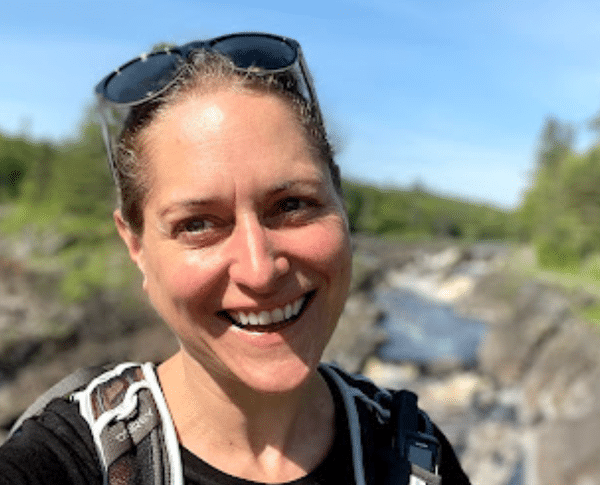
Holly Scherer is a Minnesota-based writer, photographer, outdoorswoman, and guide. She’s most at home in the great outdoors; camping, hiking, paddling, cycling, and gardening. When she’s not on an adventure, she and her husband live in the Twin Cities where they’re fond of saying, “home is where we store our outdoor gear.”


